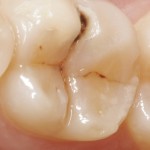You may think of snoring as a mild nuisance, but it can actually be indicative of a sleep-breathing disorder known as sleep apnea. Snoring occurs when soft tissues block air passages. Air forces entry, causing the muffled vibrations we know simply as snoring. A variety of factors can contribute to airway blockage, including tongue and jaw position, throat size, and tonsil or adenoid size. Snoring does not necessarily indicate sleep apnea, and many patients who snore do not have sleep apnea.
Sleep apnea occurs when the airways are blocked to the extent that the person stops breathing at intervals of ten seconds or longer. The continual oxygen deprivation prevents the person from receiving a restful night’s sleep, because he or she must awaken enough to breathe. If left untreated, sleep apnea can lead to:
- Heart attack
- Stroke
- High blood pressure
- Acid Reflux
- Heartburn
- Depression
- Memory loss
Symptoms of Sleep Apnea
If you snore, gasp for breath at night, or sleep restlessly, you may have sleep apnea. Other signs include dry mouth, dizziness, inability to concentrate, morning headaches, irritability, and falling asleep when driving, reading, or sitting quietly. A sleep study will help Dr. Hornstein determine if you suffer from sleep apnea. You can also take an online risk assessment at www.mysleeptest.com, which is a brief questionnaire that assesses your risk level.
You may think of snoring as a mild nuisance, but it can actually be indicative of a sleep-breathing disorder known as sleep apnea. Snoring occurs when soft tissues block air passages. Air forces entry, causing the muffled vibrations we know simply as snoring. A variety of factors can contribute to airway blockage, including tongue and jaw position, throat size, and tonsil or adenoid size. Snoring does not necessarily indicate sleep apnea, and many patients who snore do not have sleep apnea.
Sleep apnea occurs when the airways are blocked to the extent that the person stops breathing at intervals of ten seconds or longer. The continual oxygen deprivation prevents the person from receiving a restful night’s sleep, because he or she must awaken enough to breathe. If left untreated, sleep apnea can lead to:
- Heart attack
- Stroke
- High blood pressure
- Acid Reflux
- Heartburn
- Depression
- Memory loss
Symptoms of Sleep Apnea
If you snore, gasp for breath at night, or sleep restlessly, you may have sleep apnea. Other signs include dry mouth, dizziness, inability to concentrate, morning headaches, irritability, and falling asleep when driving, reading, or sitting quietly. A sleep study will help Dr. Hornstein determine if you suffer from sleep apnea. You can also take an online risk assessment at www.mysleeptest.com, which is a brief questionnaire that assesses your risk level.
Treatment
Three methods of treatment include surgery, using a CPAP (Continuous Positive Airway Pressure), and wearing a custom fit oral appliance at night.
One option is surgery for those patients who have a blocked airway. With obstructive sleep apnea (OSA), blockages somewhere in the airway occur repeatedly and cause breathing to stop for at least ten seconds and maybe for a minute or longer. The intention of surgery is to open the airway sufficiently to eliminate or to reduce obstructions to a clinically insignificant level. In order to do so, surgical therapy in adults often must reconstruct the soft tissues (such as the uvula and the palate) or the bony tissues (the jaw) of the throat. This method has about a 50% success rate.
The most common method of treatment for sleep apnea involves a CPAP machine, which delivers a continuous stream of oxygen via nose and/or facial mask. While effective, the CPAP often proves cumbersome, and many patients find CPAP therapy intolerable and discontinue use.
In many cases, Dr. Hornstein can provide CPAP intolerant patients with an alternative. Oral appliance therapy involves a custom-made orthotic worn at night. Depending on your needs, the orthotic can reposition the tongue, hold the jaw forward, and prevent the soft palate from blocking the airways. An oral appliance also alleviates snoring. Dr. Hornstein will consult with you to determine which kind of oral appliance is right for you.

